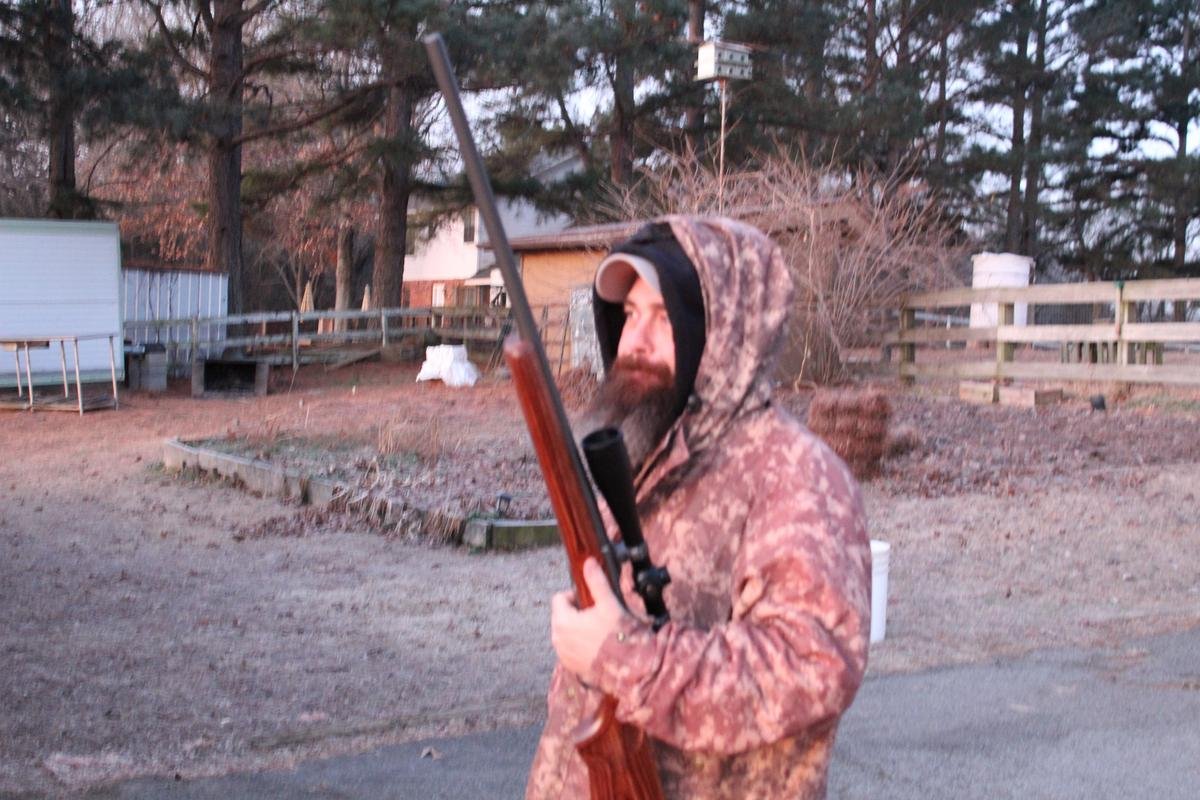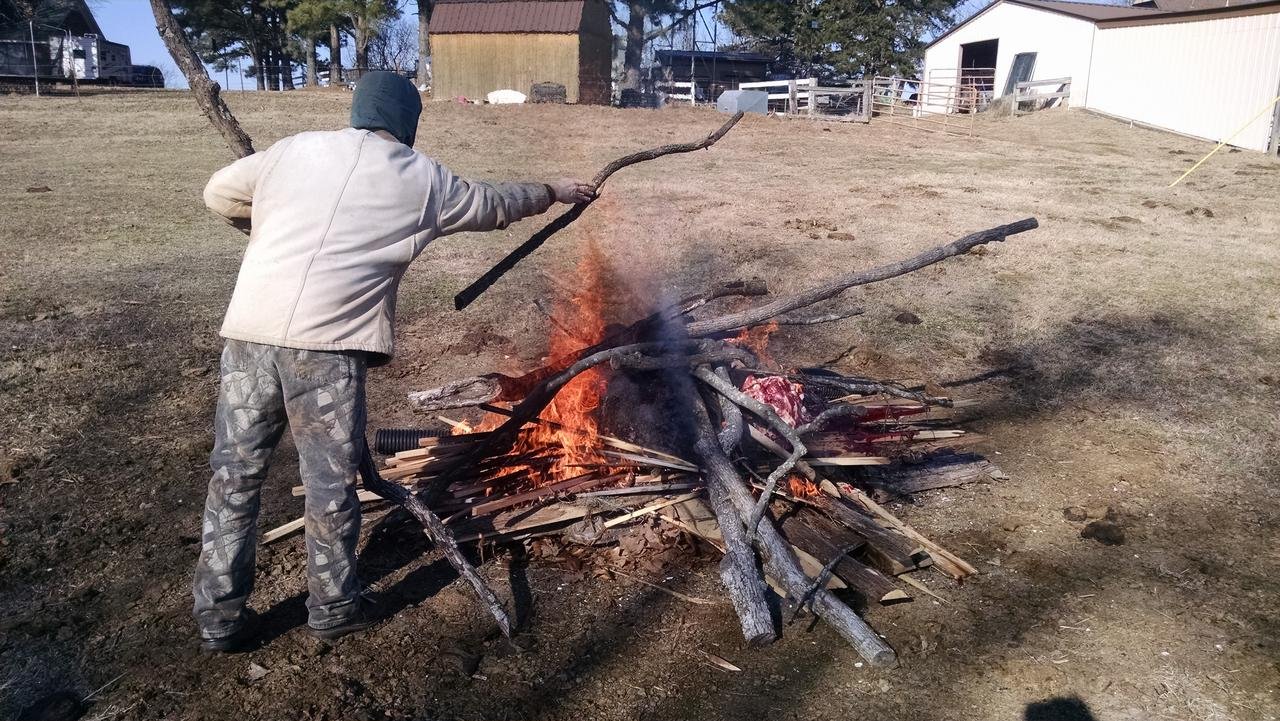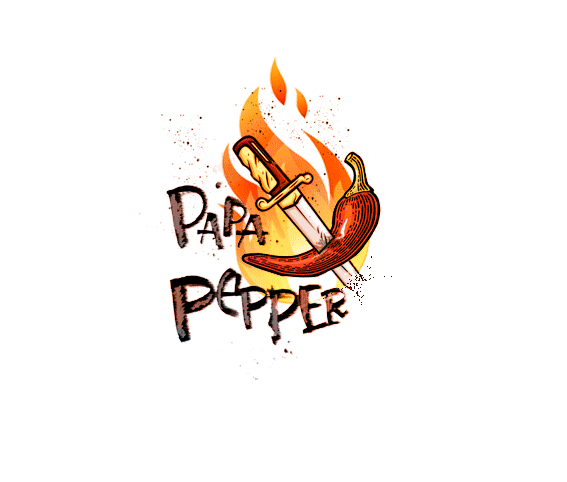
This was an interesting and educational experience for me.
A while back I received a message from @mericanhomestead about an opportunity. The opportunity was to come down to @shalomacres and meet up with @randomstuff and @beatitudes8 to help butcher a cow. This sounded like a great opportunity to not only learn something new, but also to help others and to meet up with some great steemians.

LET THE LEARNING BEGIN

While I will spare you all of the details, I will share a bit about the whole process and day. @Mericanhomestead and @papa-pepper met up the day before, and traveled down to @shalomacres together. We had a wonderful time hanging out with the family of @shalomacres that night, including @randomstuff, and finally wrapped things up around midnight. @Mericanhomestead and I hit the couches, but I stayed up for a while to take care of some "steemit stuff."

We awoke at 6:30 am to get the day started. Our goal was to be done quartering the cow by noon, so we wanted to get and early start. Interestingly enough, it was a bitterly cold day and the power went out soon after we awoke. I was blessed to be able to see the sky lighting up even before the sun rose, and relished the experience.

Soon it was time to call the cows and get things started. Here you can see @mericanhomestead with the rifle that we used. While no one takes pleasure in the killing of animals here, it is a choice that many of us are making. Deciding to raise our own meat often means killing our own animals, and on the homestead, it often comes with the territory. @Shalomacres hasn't even purchased meat from the store in four years now.

The cows came when called, and the one that was selected for the day was separated. In a moment, it was over, and we were ready to start the process. The cow had lead a happy and healthy life, and just had this one bad day. Unlike when people have pet dogs (for example) that become old and full of health issues which eventually lead to the owners putting them to sleep, this cow was taken out in the prime of her life, before she began to suffer the pains of growing old.

With the power still out, we needed a generator to get the garage door open and get the tractor out. Thankfully, we were able to overcome this obstacle. Eventually the power did come back on, but we managed without it when we had to.

Tractors are very handy "tools" to have on the homestead. For this project, it allowed us to move a very heavy animal where we needed it. I learned a lot through the whole process, and we ended our portion of the help in good time. It was great to hang out with some more homesteading steemians too. Besides the practical butchering things that I learned, two other things stuck out, which I'll share below.

A FREEMARTIN

This heifer was about three and a half years old if I remember right. She weighed almost a half ton. Normally, people prefer to eat steers, which are castrated males. If you are keeping a male for breeding, you usually only need one, so "extra" males are frequently castrated and then raised for beef. Young female cows are often raised up to be bred, and since cows believe in polygamy, one bull can breed several cows.
Unfortunately for this female cow, she was a "freemartin" or "martin heifer." I had never even heard of this before, so I'm glad that I learned about it now. This is an infertile heifer, because she was a twin to a bull calf. In the womb, some cellular material from a male twin mixed with hers, and left her unable to conceive. This is not all that rare in cattle, and can even happen with pigs, sheep, and goats.
Since she could not successfully breed and conceive, this became her new purpose on the homestead; a meat cow.

A VIKING FUNERAL

This was another amazing thing I learned. At @shalomacres, the common practice is to burn whatever remaining parts they do not plan on using. After the meat, bones for bone broth, and a variety of parts for dog food have been removed, whatever remains is placed on a large pile of cedar wood. Since the cedar wood burns very hot, it helped completely burn the waste parts.
From what would have been wasted, I took the hide to attempt to tan. It is a lot of work to try to tan a hide this large, so most people don't even try, and I can't blame them. Because it isn't really food, they are often discarded when people butcher cows. I'll see how it goes, and I'll let you know. Additionally, I also cut the tongue out of the head, but that's another story for another day.

The purpose of burning the waste is simple. First off, it cuts down on predators and scavengers in the area. If a carcass was left to decompose, the vultures and coyotes would certainly make their way in. With baby lambs and other animals around the homestead, inviting coyotes to come near is not a good idea. Also, once everything is burned, the wood and bone ash can be used in the gardens and fields as a fertilizer, so nothing is really wasted at all.

A big thanks to @shalomacres for allowing me to join in and come down, and a shout out to @mericanhomestead, @randomstuff, and @beatitudes8 too! Thanks guys! Hopefully I'll see you all again soon.

As always, I'm @papa-pepper and here's the proof:

proof-of-cow

Until next time…
Don’t waste your time online, invest it with steemit.com


